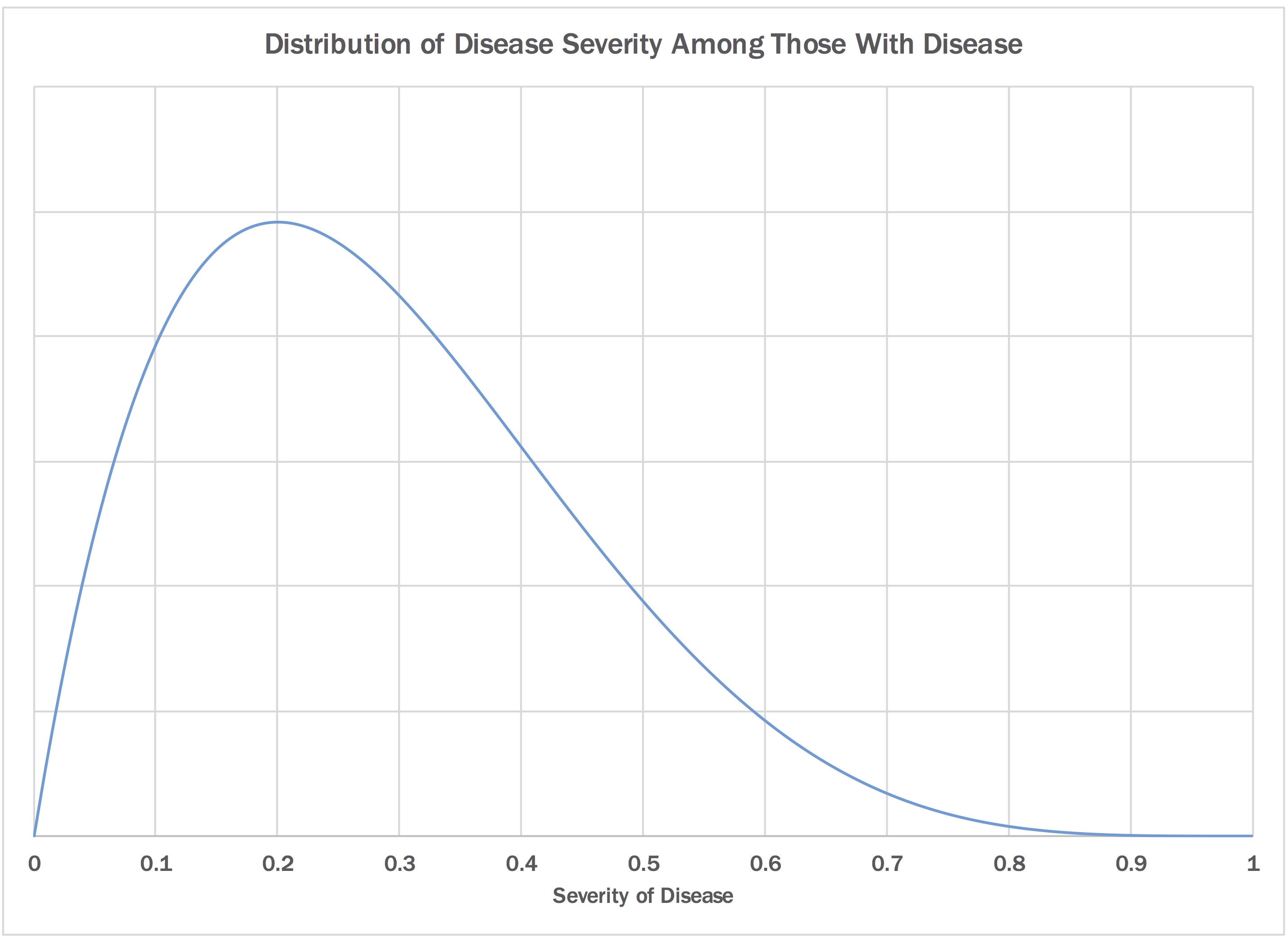
Between the medical academic community crying foul over the med-tech startup’s lack of transparency and the SEC’s concerns about whether Theranos’ leadership misled investors, a more fundamental problem with the blood testing company has been overlooked. At least until now.
Katherine Hobson at fivethirtyeight.com notes that there’s a flaw at the very core of the business, and it’s got nothing to do with the technology or claims made to investors. It’s that more sensitive tests and reduced barriers to information will lead to overdiagnosis and therapeutic mishaps.
I’ll unpack the three insights driving this concern because they’re not widely understood, even in the medical community. And understanding these insights is vital beyond the setting of fancy pants blood tests.
The first important insight is that disease isn’t a binary state; nearly all disease sits on a spectrum.[note]In fact, very little in nature is binary. Crisp distinctions are really more about the decisions we make rather than a decision that nature’s made for us. Consider this: where precisely does the pulmonary artery stop and the heart begin? What exactly constitutes a rainy day versus a not rainy one?[/note] Whether we can observe the disease depends an awful lot on how severe the disease is and how sensitive our tests are. When a disease is clinically apparent – that is, when it’s severe enough to cause signs or symptoms, it’s toward the more severe end of the spectrum.[perfectpullquote align=”left” cite=”” link=”” color=”” class=”” size=””]Disease isn’t a binary state; nearly all disease sits on a spectrum[/perfectpullquote]
When a disease causes no outward issues and sits beyond the detection of our tests, it’s toward the less severe end of the spectrum. (Doctors refer to such disease as occult, not because it’s caused by witches but because the Latin root of the word means “hidden.”)
The second insight is that disease doesn’t alway progress, and sometimes it even regresses. This one is more difficult to prove because the waxing and waning of disease is likely to happen most often when the disease is far less severe… and beyond the reach of our most sensitive tests. But we do know it happens. For example, researchers carefully examined the thyroid glands of people who died from other causes. They found that when they used thyroid tissue sections of 2mm to 3mm, 36% of people had at least one tumor. They further estimated that were they able to make even finer slices of the tissue, virtually every person would have at least one tumor.
This means that the distribution of disease – if we were able to detect it – very likely skews to the left. That is, at any point in time, there will be a lot more people with a less severe form of the disease than those with more severe disease. Here’s a hypothetical chart showing the distribution of disease by severity. (We don’t really know what this curve looks like for any disease because we don’t have tests sensitive enough – short of cutting up autopsy tissue – to gather the data.)
Finally, the benefit of treatment is not the same across the spectrum of disease. For many conditions, treatment benefit shows a “Goldilocks” effect. If the disease is too severe, there’s little that can be done; if the disease is very mild, the risks and side effects of the treatment may overwhelm the benefit… if there’s any at all.[perfectpullquote align=”right” cite=”” link=”” color=”” class=”” size=””]Treatment benefit usually exhibits a “Goldilocks” effect; more isn’t always better[/perfectpullquote]
What does all of this mean, and what on earth does it have to do with Theranos? There is clearly a role for screening and testing. But if the tests are overly sensitive – beyond the Goldilocks zone – testing will do more harm than good. We will be finding disease of ever increasingly mild forms, and it will be very difficult not to treat people, even if the risks of treatment outweigh the benefits.
In other words, if Theranos’ technology actually does work, it’s quite likely that such testing will cause patients and providers to dip deeper into the reservoir of benign abnormalities, label these abnormalities as treatable disease, and lead to therapeutic mishaps. And because there’s more mild disease than severe, that is a deep reservoir indeed.
